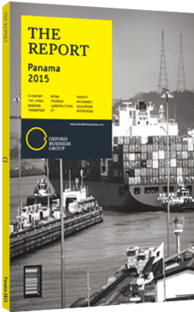Useful information for first-time travellers to Panama
Visa Requirements
Citizens of the US, Canada, the EU and some other countries are granted a 180-day visa on arrival with a valid passport. It is generally advisable to have an onward ticket and proof of solvency. Visitors planning to be in Panama for longer than 180 days can apply for an extension or for a visa in another category after entering the country. Applications can be made at the Oficina de Migración y Naturalización (Immigration and Naturalisation Office) in Panama City. Local offices can also be found in David, Changuinola, Santiago and Chitré. Visas can also be renewed by leaving the country for at least 72 hours every 90 days, or when the visa expires.
Etiquette
Panamanians usually greet each other with a kiss on the right cheek, however, a handshake is the more appropriate way to greet in a business environment. When doing business, punctuality is appreciated, though traffic in Panama City generally makes the margins of what is acceptable slightly broader.
Currency
The currency is the balboa which is pegged to the US dollar and is also accepted as legal tender after an agreement between the two countries was signed in 1904. Panama does not print bank notes but mints its own coins. Panamanian coins are 0.50, 0.25, 0.10, 0.05 and 0.01 US cents, nickels, dimes, quarters, and half-dollars are accepted and widely circulated. In 2011, new one and two balboa bi-metal coins were issued. Visa, American Express, MasterCard and Diners Club credit cards are accepted in most hotels, restaurants and commercial establishments in urban areas.
Electricity
Outlets are of the standard flat two-pin American type. Panama’s electrical grid covers the whole country and is generally reliable, though occasional outages are possible.
Language
Spanish is the official language, spoken as the first language by 93% of the population. However, English is widely used for both business and in tourism. At the same time, seven indigenous communities speak their own languages and in some areas indigenous groups do not speak Spanish fluently. can be made at the Oficina de Migración y Naturalización BUSINESS HOURS: Government offices, including post offices, are open 8am to 4pm weekdays and do not close for lunch. Most banks are open 8:30am to 1pm or 3pm weekdays. Some have Saturday hours as well. Shops and pharmacies are generally open from 9am or 10am until 6pm or 7pm, Monday to Saturday. Grocery stores keep longer hours, opening around 8am and closing by 8pm or 9pm, although several of them in Panama City stay open 24 hours. Restaurants usually open for lunch from noon to 3pm and dinner from 6pm to 12am.
Transport
Tocumen International Airport is a major hub connecting North and South America. There is another domestic airport in Panama City, Marcos A Gelabert Airport, also known as Albrook International Airport, from where it is possible to fly to nearly all of Panama’s domestic destinations, as well as to other locations in neighbouring countries. Other cities and towns, such as David, Changuinola, Isla Colon, Santiago, Chitré, Colón and El Porvenir also have airports. Taxis are very easy to find in Panama. A metro system is being developed in Panama City, and Line 1 is already operational and widely used by commuters. Nevertheless, public transport options remain limited.
Climate
Panama enjoys a tropical climate. Temperatures are high, as is the relative humidity, and there is little seasonal variation. Temperatures on the Pacific side of the isthmus are lower than on the Caribbean and markedly cooler in the higher parts of the mountain ranges. Climatic regions are determined less on the basis of temperature than on rainfall, which varies regionally from less than 1300 mm to more than 3000 mm per year. Almost all of the rain falls from April to December. Rainfall tends to be heavier on the Caribbean than on the Pacific side of the continental divide. COMMUNICATION: Panama has an efficient telephone and communications system. SIM cards for mobile phones can be purchased at airports or at retail outlets, providing local, international and data services. Prices vary by network, but expect to pay $5 for a SIM card, supplied without any calling and data credit.
You have reached the limit of premium articles you can view for free.
Choose from the options below to purchase print or digital editions of our Reports. You can also purchase a website subscription giving you unlimited access to all of our Reports online for 12 months.
If you have already purchased this Report or have a website subscription, please login to continue.

